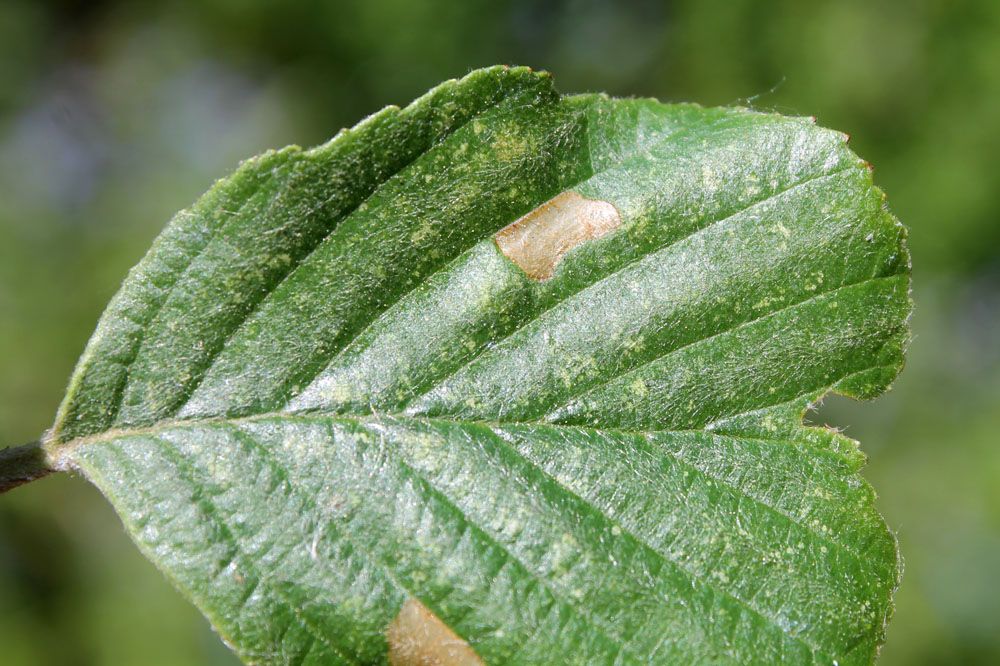
European Alder Leafminer – Fenusa dohrnii
European Alder Leafminer: Appearance, Territory, Damage and Life Cycle
Latin Name: Fenusa Dohrnii
Appearance: The European alder leafminer, Fenusa Dohrnii, is a species of common sawfly in the Tenthredinidae family. It may be found across Europe. The sawfly larvae Fenusa Dohrnii mine the leaves of numerous Alder species (Alnus sp.). The larva has a long cream-colored body with a black patch on the bottom side of the thorax that gets increasingly noticeable as the caterpillar grows older. The larval body is coated with minute black spines, and the mandibles contain few teeth. Adults are black sawflies with a white middle tibia, about 4.0 mm in length. Females have a modified ovipositor that works like a saw to deposit eggs beneath the surface of leaves.
Hosts Plants: Ornamental and wild alder are the host plants for European alder leafminer. Larvae mine in the leaves of Alnus.
Territory: Europe and North America
Damage Insect Cause: Blotches on the leaves are caused by larvae. There is no initial corridor and the blotches are big and brownish in tone. In most cases, the mine will begin at a vein axil and progress toward the edge. While the mine normally stays between two thick lateral veins, it can also run across side veins towards the leaf border. On the top surface of a leaf, there are several mines. The adult sawfly is mostly black, although the larval mines are more frequently observed.
Life History and Habits: As a pupa, the insect spends the winter under the soil. Adults initially appear in the spring, when the leaves are just beginning to develop. The ladies deposit their eggs on the top leaves. The larvae tunnel between the upper and lower epidermis of leaves after the eggs hatch. They most likely have many generations every year.
